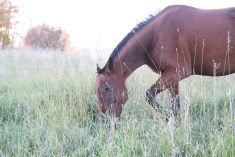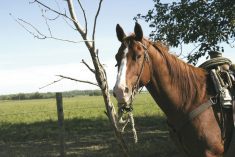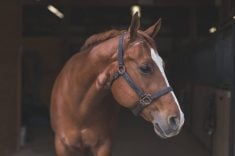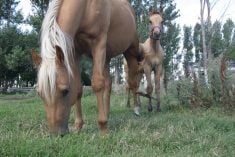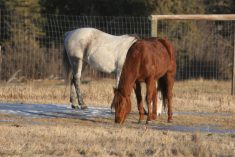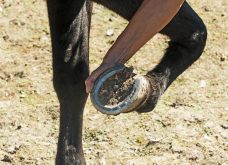The non-professional bucking horse is a conundrum to the equestrian community and there is limited information on how bucking behaviour can best be investigated.
Simply correcting the behaviour with assertive training methods, without understanding the root cause for the bucking, has limited success in preventing this unwanted and potentially dangerous activity.
In fact, all horses are evolutionarily hardwired to buck. Bucking is a valuable defensive mechanism used to thwart pouncing predators. Although the domestic horse has few altercations with predators, the behaviour is still retained as a gesture of avoidance or as a defensive reaction to a multitude of triggers.
Read Also
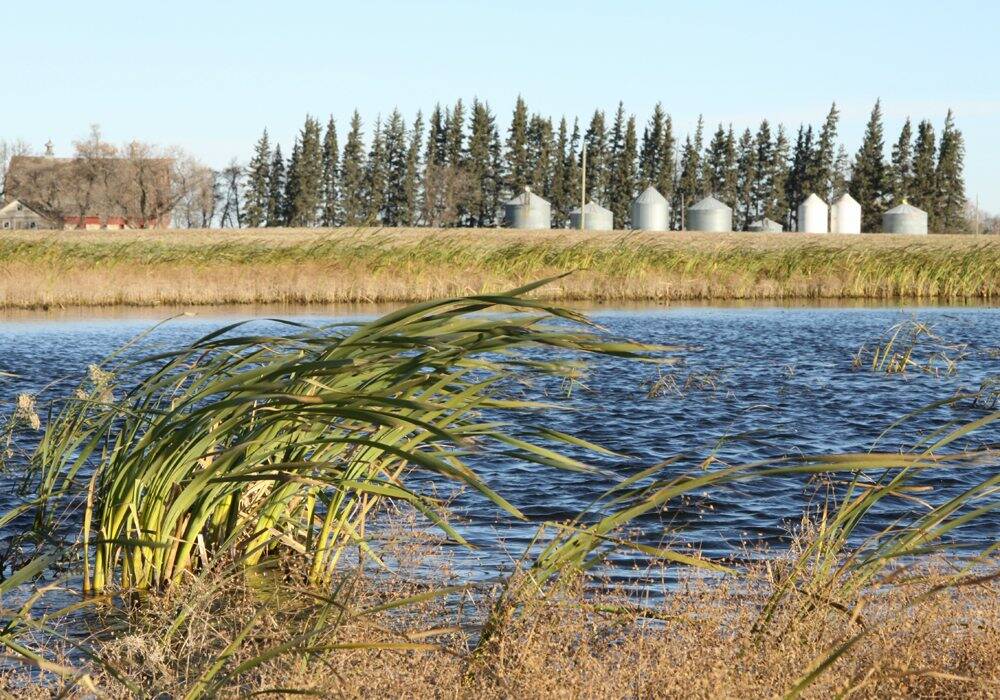
Could snails keep blue-green algae out of livestock dugouts?
Could snails keep blue-green algae out of livestock dugouts? Researchers at Brandon University are studying them as natural water quality filters.
A buck is an upward leap, usually in addition to forward propulsion, when either both hind feet or all four feet are off the ground with humped topline. The spectrum of bucking can range from humping up, small crow hops or kicking out with the hind legs, to full-body engagement such as shown by professional bucking horses.
The professional bucking horse will fully commit to bucking with all four feet off the ground, its head down low, its mouth open and often bellowing. Different manifestations of the animated leaps include ‘pronking’, ‘bronking’ and ‘fly bucking’.
Although an exuberant horse can buck out of frisky play, generally the horse bucks in response to an unpleasant situation — from the horse’s perspective. Even the professional bucking horse selected for its bucking prowess is outfitted with the flank strap to reflexively trigger the bucking spree. The horse does not stop bucking until a pickup man trips a quick-release mechanism on the flank strap. The horse will usually stop bucking immediately.
Although handling and training methods play a significant role in determining the willingness of the riding horse to buck, it is valuable to consider other causes that may trigger the unwanted behaviour.
For example, in the situation where a horse’s natural movement is confined to a stall, small paddock or arena work and it receives rich feeds, the horse may buck unexpectedly out of exuberance, excitement and excessive energy. This can be compared to a child that has lots of energy but nowhere to naturally expend it.
Many young horses begin to buck out of fear: fear of the rider, the girths, the rider’s legs, stirrups or spurs or as a “pent-up” response following an unexpected event or spook.
The young riding horse requires a great deal of preparation to allay and soothe its worry about being ridden. Although some young horses can be compliant with little preparation, the majority of youngsters require a great deal of understanding, time and patience to offer the rider a friendly seat.
If not prepared properly from the horse’s perspective, the horse will seek relief from the tension and worry and bucking is a logical outcome. Once the horse has unseated a rider three or four times, the bucking can become a learned behaviour that becomes increasingly more difficult to unravel. Patient mental, physical and emotional preparation of the young horse is crucial to a favourable riding experience for both parties.
Pain is often an overlooked trigger of bucking, especially in the more seasoned horse with an unexpected change in behaviour. Specific causes of pain include an ill-fitting saddle or girth, pain anywhere along the topline, poll and neck pain, kissing spine, thoracolumbar pain and sacroiliac pain, girth region pain, primary limb lameness, sore feet and unidentified sources of referred pain.
Pain anywhere along the topline can be problematic for the horse when weighted with a rider and tack. As a coping strategy, the horse buck to relief itself.
Horses with digestive disturbances such as gastric and hindgut ulcers can also react with bucking when being ridden. The young horse subjected to the 30-day boot camp is highly susceptible to developing ulcers and subsequent displays of bucking.
Many horse’s bodies will foreshadow a bucking episode by displaying a pattern of sensitivity and tension often noted as being “cinchy”, cold-backed or irritable, cranky and uneasy while being groomed and tacked. As the level of pain escalates, the horse is no longer willing to go forward and may buck as a coping strategy.
Although it can be challenging to identify the cause of the bucking, it is important to make every effort to do so. Various aggressive training methods that override and suppress the bucking behaviour in the horse without identifying its primary causes generally push the bucking event forward with unpredictable and often dangerous consequences.
Any of these triggers may be compounded by a rider who is fearful, poorly balanced or crooked. Poor riding technique, conflicting, inconsistent and unclear communication often lead to the horse’s sense of frustration and motivate it to buck as a means of relief.
Determination of the underlying cause requires a comprehensive assessment that includes an assessment of horse health, saddle fit for horse and rider and suitability of the horse-rider combination.
Identification of the primary cause of bucking allows for a targeted resolution and then careful retraining, which is crucial. In a minority of horses, the unwanted behaviour cannot be reliably resolved.




